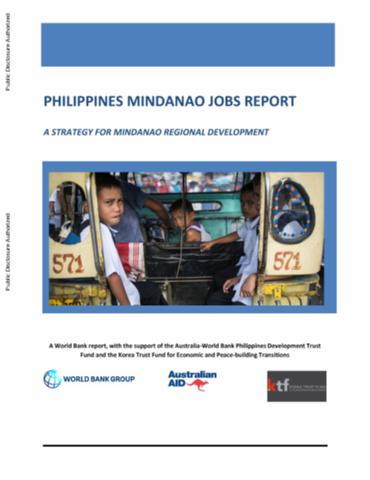Resource information
This report adds value because its inclusive approach of engaging with a broad-based group of stakeholders at the time of both analysis and engagement has served a means of building support for needed reforms. The goal was to generate ownership among Mindanawons through consultations which were guided by mostly local technical experts. For the analysis, the World Bank partnered with leading universities, think tanks, experts, and nongovernmental organizations (NGOs). Some 90 percent of the extended team came from within Mindanao, and they contributed more than 40 background papers. The study’s inclusive approach was to listen intently to government, business, labor, civil society, and vulnerable groups who are often left out in the engagement process, such as indigenous people, Moro women, out-of-school youth, combatants, and internally displaced people. From January 2015 to June 2016, some 1,500 stakeholders were consulted. Finally, 10 eminent individuals with government, business, labor, and civil society experience provided strategic advice to the report team. Finally, building on the dialogue with the Philippine government and stakeholders in Mindanao, this report proposes a strategy for regional development in Mindanao. The three main components are to (1) raise agricultural productivity and improve farm-to-market connectivity; (2) boost human development; and (3) address drivers of conflict and fragility and strengthen institutions in ARMM and conflict-affected areas. The World Bank engagement for Mindanao will be based on this strategy. Policy recommendations are made in four separate categories: (1) increasing agricultural productivity by improving extension and irrigation services, along with price reforms to realize Mindanao’s agriculture potential; (2) building up logistics and transport connectivity by improving road networks and the efficiency of shipping services to reduce trade costs; (3) improving the supply of reliable power and the speed, affordability ,and quality of information and communications technology (ICT) services by fostering competition; and (4) supporting private investment by addressing the growing skills gap, the high regulatory burden for businesses, and by improving financial inclusion and the governance of land. A separate section considers economic policy measures to support the resolution of Mindanao’s longstanding violent conflicts.


